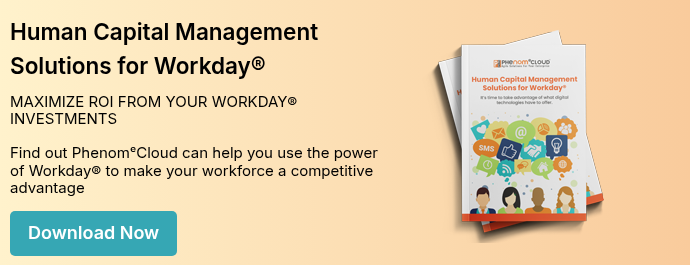
The Reporting Principles play a fundamental role in achieving pellucidity in various functions of an organization. They offer greater comparability, more flexibility, long term profitability & sustainability to the organizations. They help organizations to set goals, measure performance & manage change in order make their operations shore up in trending global markets.
Talent Development Reporting Principles is an industry-led initiative which forms an essential foundation to establish internal reporting principles and standards for Human Capital. It provides a simple & all-rounded guidance in the form of a framework for planning, collecting, defining & reporting the critical outcome, effectiveness & efficiency measures crucial for delivering results & contribute to the success of the organization.
How to implement TDRp in your organization
Any declamatory change in an organization can be implemented with a measured approach towards this. This can be applied to the following six primary key human capital processes:
- Learning & Development
- Leadership Development
- Performance Management
- Talent Acquisition
- Capability Management
- Total Rewards
There is a 10-step plan for applying:
Step 1: Commit to Implementing
This is the ‘buy in’ step. Devote to enforce it in your organization. Attribute responsibilities & include specifications in the leaders’ performance goals. Apparently aphorize that this is a priority for the leaders’ and ascertain successful implementation of improved measurement and reporting. Successful implementation should be a written performance goal for the leaders’ and those directly involved in the project.
Step 2: Socialize its concepts
This is the change management step. The advantages of talent development reporting need to be socialized within your organization, especially among your organization’s leaders and key people in your own organization. Communicate well and make them understand why your organization is implementing a new reporting framework and how it benefits them. Be honest about the amount of effort involved and when can they expect results.
Step 3: Create multi-year plan
Perfect implementation of it will take several years. No organization can complete this journey just in a year. Fix up reasonable timeline with milestones to employ TDRp based on the resources available & intricacy of your organization. Start with a model and a limited number of measures that focuses on one particular program, unit or segment. They can be extended at a later stage. Identify the supporting processes and systems to provide the desired measures and reporting capabilities. Some existing ones may need to be modified, and others will have to be created.
Step 4: Create Draft Organizational Outcome Statement
Completely understand & focus on your organization’s business and strategic plans along with goals & priorities. Organizational Outcome Statement should be only 1 page in length & should not contain more than 10 Organizational goals. Once after identifying the goals, need to determine if a particular initiative has a role to play in achieving the goal, then find out a measure of success for the goal (E.g.: 10% increase in sale, or 15% increase in productivity). Next, fix up effectiveness measures which entail how to measure the initiative’s impact on the goal. Once agreed on the measure, agree on the planned impact of the initiative for the year such as a planned application rate of 75% after a quarter or the particular initiative will contribute 50% to the goal achievement. Sometimes, the impact will be qualitative like high, medium or low. Key to step 4 is to have the discussion proactively with the sponsor & agree on measures of success.
Step 5: Create Effectiveness and Efficiency Statements
Review the measures agreed each year and plan to refine or add few until arriving at the optimum set of measures. This process will likely take 2-3 years for achieving success. The Effectiveness Statement focuses on how effectively or how well the outcomes are achieved. Typically, for the effectiveness statement, every organization will want to report levels 1 & 2. Impact, even if only the participant’s or sponsor’s forecast, should be reported for a few. At a minimum, effectiveness measures used in Outcome Statement will need to be reported for some programs. A high-level Effectiveness Statement will probably be about a half page.
For the Efficiency Statement there are many measures to consider. Look at the different categories and decide first what categories are most important for the coming year. Then select some measures from those categories that are most important. A high-level Efficiency Statement may be one-half to two pages.
Step 6: Create Summary Statement
Create a high-level Summary Report by selecting the key measures from each of the 3 statements which needed to be actively & visibly managed on a monthly basis & of most interest to your CEO & Senior leaders. Once the draft is created, share it with CEO, SVP of HR & other leaders of governing board, and then incorporate their feedback as appropriate. The Summary Report should be of a maximum of 2 pages & ensure to provide a year-end forecast for each measure. Remember, this is an executive-level report for the particular segment’s leader to share with the CEO & other senior leaders to update them on year-to-date progress against agreed upon goals. It must show what impact the particular initiative is having on achieving the organization’s goals and whether it is being well managed.
Step 7: Create Program Reports
Create a Program Report for each key area & each program which is included in the Outcome Statement & the Summary Report. Use these reports monthly to manage the activities pertaining to the particular initiation. Program Report should be about a page for each program & expect to develop 5-15 reports for your organization. Also, ensure to provide a year-end forecast for each measure.
Step 8: Create Operations Report
Create the Operations Report with key measures from the Efficiency Statement, to actively & visibly manage on a monthly basis. Include a year-end forecast for each measure. This report is meant to focus on just those efficiency measures the particular leader intends to actively manage. It should not be more than 2 pages. More detailed reports may be created for the management of individual programs & initiatives.
Step 9: Integrate and Refine
In order to achieve success with Talent Development Reporting Principles for planned results & deliverables, it needs to be integrated with monthly management processes. Also integrate information systems to reduce manual work. Don’t worry about creating perfect statements & reports at the outset, moving forward, with the added experience year-on-year, you will identify opportunities to refine the statements & reports as well as the systems & processes to produce them.
Step 10: Review and Improve
Spare some time to review its implementation progress regularly. In the first year, Talent Development Reporting Principles implementation progress should be on the Chief’s agenda every month. Once implemented, leaders should update the multi-year travel plan at least once every year. Inspect lessons learned & identify opportunities for further improvement.
Conclusion:
TDRp is an exciting industry-led initiative & a comprehensive framework that brings standards and business discipline to the major HR functions. Its implementation has a great stake in the outcome of aligning business initiatives to the strategic objectives of the organization. This is a big walkover which retorts enormous value to the organizations. Do not get discouraged or give up. Assess your current state of reporting and take small steps forward to produce early success and breed confidence. Focus on the most important and meaningful measures for your organization. This is an intensive reporting system with industry standard measures that endow proactive & headway planning, back-end performance measurement & persistent advancement. Finally, TDRp offers end-to-end methodological analysis which enables organizations to equip and invest to manage talent like a business to arrive at the desired outcome and to have greater impact on company’s results. JUST START & enjoy the success with reporting.
Contact us today or call 1-855-978-6816 to talk with us about your business needs.
PhenomᵉCloud is a full-service technology company dedicated to helping clients solve business problems, improve the capability of their people, and achieve better results.

Leave a Comment